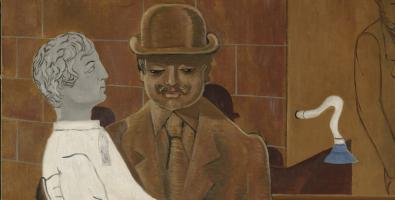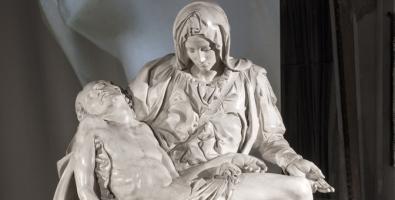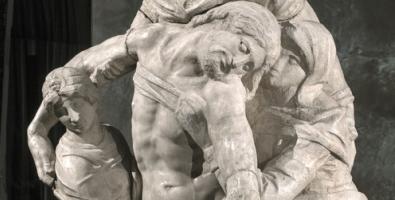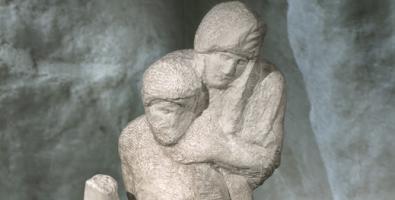The Pietà of Max Ernst and Michelangelo
We offer to the visitors the chance to explore the iconography of Pieta through the exhibition of three historical casts of Michelangelo's masterpieces dedicated to this theme.
You can visit the exhibition “Le Pietà di Michelangelo” in the Sala delle Cariatidi, on the same level as this exhibition, with free admission, until 8 January. At the same time, the retrospective dedicated to Max Ernst presents the masterpiece-painting from the Tate in London, Pieta or The Revolution at Night (1923). Ernst created this work as soon as he moved to Paris from his native Germany in the winter of 1922/23.
The term Pieta, thanks to Michelangelo's work, finds its origin in Germany, as illustrated in the 2018 Milan exhibition at Castello Sforzesco, entitled Vesperbild.
The first images of the solitary group with the dead Christ in Mary's womb can in fact be traced back to Germany, at the beginning of the 14th century, and are denoted by the term Vesperbild, vesper image. It evoke the moment when on Good Friday, at sunset, the body of Christ laid on the cross is awaiting burial.
From this period begins the proliferation of this kind of image in the form of wooden sculptures in the Nordic countries. The atmosphere of Ernst's work makes one think of twilight or at any rate of night. Salvador Dalí wrote in 1932: “I like to imagine that the starting point of Surrealist experiences is the title of Max Ernst's painting La révolution la nuit”.



